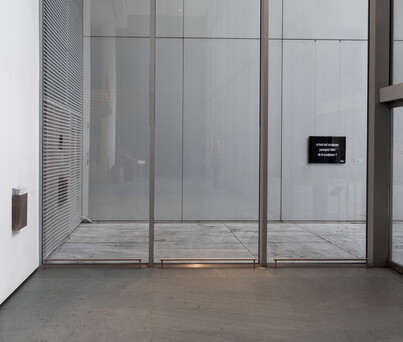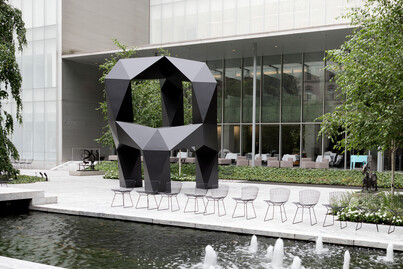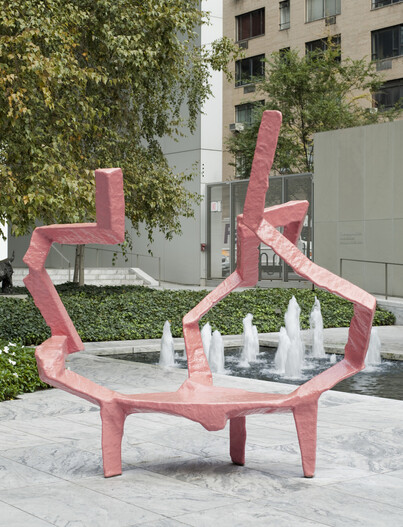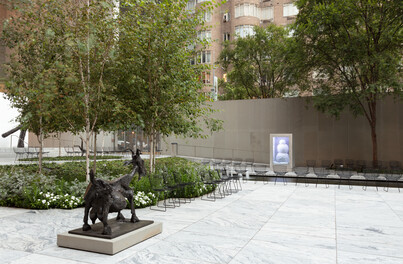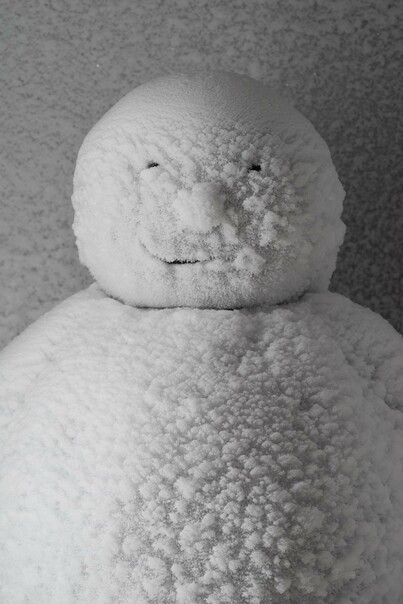Peter Fischli’s sculpture garden
by Lewis Kachur
Reviews /
Exhibition
• 12.12.2018
The title of Peter Fischli’s installation at the Museum of Modern Art, If Everything is Sculpture, Why Make Sculpture?, is announced by an exhibition copy of an eponymous word painting by Ben Vautier on the wall of MoMA’s sculpture garden FIG.1. This apparently melancholic allusion to the Duchampian readymade soon devolves into a self-reflexive conundrum: does a painting hung in a sculpture garden become a low-relief sculpture? Fischli’s display, co-organised with Cara Manes, is the thirteenth iteration of the museum’s occasional – and venerable – series ‘Artist's Choice’. The series invites artists to curate aspects of the museum’s collection, an initiative which in fact began with sculpture: Scott Burton on Brancusi in 1989.1 Fischli’s is the first to be staged in the sculpture garden, a promising – and, in retrospect, obvious – setting.
Introducing yet resisting Ben’s implication, Fischli culls some twenty sculptures from the museum’s collection that gamely survey the possibilities of what sculpture was and can be. Although this review focuses on the newly added works, the sculptures that remain in place from before might also be considered a curatorial decision. These range from the techno-kinetic (Robert Breer, Osaka I, 1970) to the monumental abstraction of Tony Smith’s architectural Moondog (1964) FIG.2, which one can walk beneath and view nearby skyscrapers framed in its negative spaces. Some works blur the boundaries of art and design, from Hector Guimard’s Paris metro sign (permanently installed in the garden) to a functional sculpture one can sit on, Maya’s Dream FIG.3, by Franz West. Fischli’s selection represents a period of over one hundred years (1900-2007) and a range of styles, from the classical figurative (Aristide Maillol) to the abstract (William Tucker). There are even animalier subjects, as Mary Callery’s little-known Horse (1942) is juxtaposed with Picasso’s resident She-Goat (1950), both purchased by the museum soon after they were made. Fischli wanted to ‘look at works that were obvious candidates, from the standpoint of art history, but also those that might be less so – works that instead reflected the taste, priorities and institutional hierarchies of their time’.2 This accounts for his unexpected choices, such as Callery and Herbert Ferber’s Roof Sculpture with S Curve, II (1954; cast 1969), which now appears a rather generic example of mid-century abstraction.
Like the artist-curators of previous ‘Artist’s Choice’ displays, Fischli has included his own work. Snowman FIG.4 updates a Fischli and David Weiss commission of 1987. Since his former partner passed away in April 2012, Fischli has continued solo, here incorporating interim technical advances. Inside the minimalist metal refrigeration unit, water condenses and freezes on three round balls. Eyes and a linear smile are scraped out of the top sphere on a regular basis FIG.5. There are no other accoutrements, unless one counts the LED lights inside the glass door that cast faint tints on its inhabitant. The unlikely sight of an icy snowman during a hot Manhattan summer was a surprising marvel. A snowman for all seasons is not just an amusing high-tech folly, however; it is a proposition for the democratisation of sculpture: ‘a sculpture that almost anyone can make’, the Swiss artist states in the exhibition brochure.
As it happened, the placement of Snowman was the impetus for Fischli’s initial visit to the garden. This expanded into a search ‘to find neighbours for the Snowman from MoMA’s collection’. Snowman is joined by two other of Fischli’s recent sculptures that modestly court indiscernibility. A bronze Brochure Box affixed to the sculpture garden wall is identical to two inside the museum, except it is without the mapped checklists that the latter hold. Is it a minimal sculpture, or a rain catcher? And does the one outside transform its brochure-laden twins inside the institutional walls into works of art?
The second sculpture is much larger but paradoxically also nearly unnoticed. It deploys a freestanding white wall, replicating one of eight originally produced in collaboration with Wade Guyton for the interior of the Aspen art museum in 2017. In the garden it passes under Guilmard’s equally defunct Paris metro entrance. This odd juxtaposition is adjacent to the seating area of a snack stand, whose customers seem oblivious to the presence of this absurd wall.
Indeed, noticeability is a factor elsewhere, as in finding an Elie Nadelman bronze obscured by hanging tree branches, or realizing that Breer’s white fiberglass sculpture is moving ever so slowly. Casual visitors may even entirely miss the show itself. The ongoing presence of stalwarts left in place like Guimard, Maillol, Matisse and Picasso may lull many viewers into thinking this is the sculpture garden as usual. They may not recall that there are usually four Matisse Backs on view; Fischli has removed one – can an empty space be sculptural? More emphatically, one figure (the Yellow Madonna) is excerpted from Katarina Fritsch’s Group of Figures FIG.6. Is one ninth of a Fritsch Group still a Fritsch group?
This display comes without the usual exhibition fanfare, almost hiding in plain sight. Its guide is also understated, a single sheet paste-up of a model of the garden with the chosen works and titles collaged in. It is labelled ‘Draft for Sculpture Garden Brochure’, purportedly not the final polished version. This useful map has a prequel on the verso, a photograph from the artist’s Zurich studio in March 2018, with the same model empty, ringed with dozens of photos of outdoor sculptures under consideration, hinting at the process of selection. With subtlety, paradox, and understatement, Fischli’s exhibition is quietly intriguing. In an age of festivalist biennials and auteur curators, it refreshingly speaks with a still, small voice, and seems to shrug, ‘why not?’.




